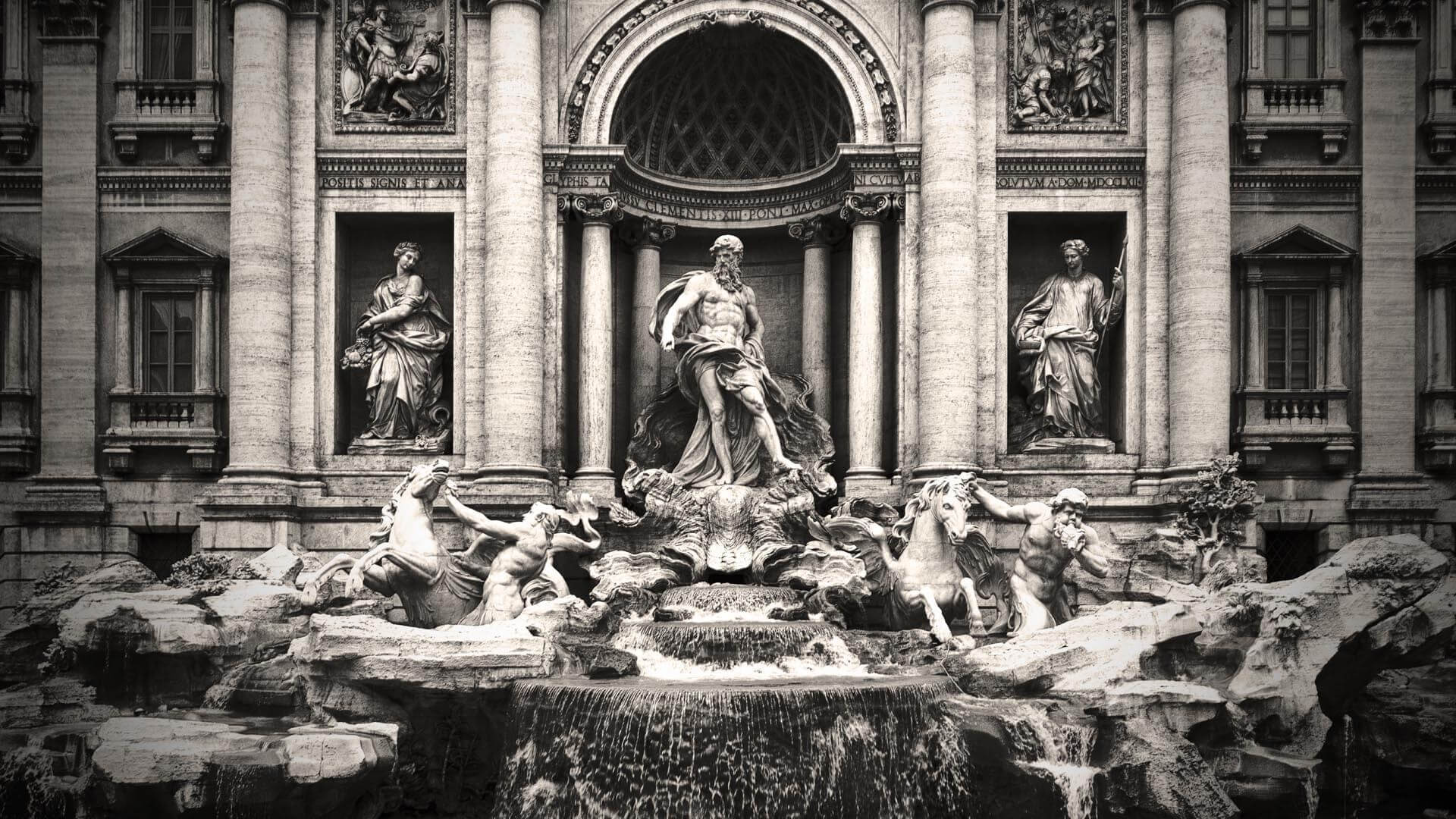The Wine Empire
So, everyone sort of knows what Italy is. Tuscany means hills, Rome means the Eternal City, Vesuvius means Pompeii. But modern Italy consists of a great many patches of land, the inhabits of which spent thousands of years sorting things out between themselves. Each region has a rich history. And the Italian wines reflect the character and virtues of each of the land’s regions perfectly.


Here we have the traces of the mysterious Etruscans, whose origin still sparks a heady debate among the historians. Their rich heritage in Tuscany includes the winemaking history, which extends back over three thousand years. Some Chianti households are even built on the foundation of the Etruscan houses.
Or the Veneto region which takes its name from one of the first Slavic tribes in the history – and it’s not just the city on a dozens islands which makes it famous. The soils we now know as Valpolicella, Bardolino and Soave have been cultivated for centuries here.


Whereas the Sicily is simply the crossroads of cultures. Over the course of history it has been owned the the Greeks, Carthaginians, Romans, Byzantines, Arabs, Norsemen. Some of them got the idea to plough up everything in their way, including the slopes of Etna. The first vine was probably brought here by Greeks during their colonisation phase. That’s how the history of Sicilian winemaking began. Time passed, the owners of this hearty island changed, but nobody failed to be moved by wine.
To the north lies Piedmont the kings of which finally united Italy under their rule in XIX. In our day, Piedmont still carries that luxurious bourgeois charm that has long been fuelled by the Nebbiolo’s juices – a whimsical grape variety which refuses to grow in any other place on Earth.
The history of wine in Italy is not without its complications either. For a long time, Italian wine was not a source of particular excitement among the connoisseurs. The cinemaphiles will easily remember the bellied fiascos with cheap Chianti that replicated the curves of Sophia Loren’s thighs from the black-and-white movies. In those films the moustachioed peasants used the giant bottles in the stools’ stead. Nowadays, a novice, upon coming to the famous land of wine, may just shrug his shoulders in disappointment in the metropolitan restaurants: is that the wine the guides gush about?..
The first wave of Italian Wine Renaissance in the twentieth century concurred with the sixties when the French classification was used as a basis for an attempt to sort out the descriptions and categories of Italian wines. Later, in the eighties and nineties a new stage commenced: the true winemakers, working independently of each other in different corners of the land, began improving the quality of their wines by turning to the traditional winemaking, furthering the cultivation of the local grape varieties and adapting the French ones.
These ideas were probably just hanging thick in the air. But it’s because of them that we can nowadays drink the Sangiovese, as lovely as the setting sun, the honest Brunello, the traditional Barolo and the hot Nerello Mascalese.
Wines
- Barolo Riserva Monfortino-Giacomo Conterno
- Brunello Riserva-Gianfranco Soldera
- Le Pergole Torte-Montevertine
- Amarone della Valpolicella Classico-Quintarelli Giuseppe
- Barbaresco Montestefano-Rivella Serafino
- Barolo Monprivato-Giuseppe Mascarello
- Brunello-Poggio di Sotto
- Barolo-Bartolo Mascarello
- Barolo Rocche del Falletto Riserva-Bruno Giacosa
- Barbaresco Asili Riserva-Bruno Giacosa
- Barolo Cascina Francia-Giacomo Conterno
- Bianco Breg-Gravner
- Barolo Villero-Giuseppe Mascarello
- Brunello-Paradiso di Manfredi
- Bandito-Quintarelli Giuseppe
- Barolo Brunate-Le Coste-Giuseppe Rinaldi
- Barolo Santo Stefano-Giuseppe Mascarello
- Barolo Bricco delle Viole-G. D. Vajra
- Magma-Frank Cornelissen
- Barolo Albe-G. D. Vajra
- Barolo Rocche del Falletto-Bruno Giacosa
- Barbaresco Asili-Bruno Giacosa
- Barolo Riserva-Giacomo Borgogno
- San Nicolo Etna Rosso-Ciro Biondi
- Barolo Rocche-Lorenzo Accomasso
- Friulano Buri-Miani
- Dolcetto D'Alba-Rivella Serafino
- Barolo-Elio Sandri
- Brunello-Pian delle Querci
- Montevertine-Montevertine
- Ribolla-Gravner
- Caparsino Riserva-Agricola Caparsa
- Friulano Filip-Miani
- Prephylloxera Etna Rosso-Tenuta delle Terre Nere
- Brunello Soccorso-Tiezzi
- Brunello-Pian dell'Orino
- Puro-Movia - Ales Kristancic
- Brunello Cerrino-Tiezzi
- Chardonnay Baracca-Miani
- Chianti Classico-Riecine
- Feudo di Mezzo Etna Rosso-Tenuta delle Terre Nere
- Barbera-Elio Sandri
- Doccio a Matteo Riserva-Agricola Caparsa
- Barbera d'Alba-G. D. Vajra
- Nebbiolo-Elio Sandri
- Oratorio di San Lorenzo Carmenere Riserva-Inama
- Carmenere Piu-Inama
- Torrette Superiore Vigne de Torrette-Di Barro
- Rosso di Montalcino-Tiezzi
- Vigneti Di Foscarino Soave Classico-Inama
- Classico Methodo Spumante-Bruno Giacosa
- Dolcetto d'Alba-G. D. Vajra
- Langhe Riesling-G. D. Vajra
- Petit Rouge-Di Barro
- Syrah Vigne de Conze-Di Barro
- Muscat Petit Grain-Lo Triolet
- Vin Soave Classico-Inama
- Lo Flapi Passito-Di Barro
- Vallee d’Aoste Pinot Gris eleve en barriques-Lo Triolet
- Fumin-Di Barro
- Vallee d’Aoste Fumin-Lo Triolet
- Vallee d’Aoste Pinot Gris-Lo Triolet
- Chardonnay-Di Barro
- Barolo Chinato-G. D. Vajra
- Moscato d'Asti-G. D. Vajra
- and 55 more wines...
Producers
- Quintarelli Giuseppe
- Giacomo Conterno
- Gianfranco Soldera
- Montevertine
- Rivella Serafino
- Bartolo Mascarello
- Giuseppe Mascarello
- Falletto Bruno Giacosa
- Poggio di Sotto
- Giuseppe Rinaldi
- Paradiso di Manfredi
- Gravner
- Elio Sandri
- Lorenzo Accomasso
- Frank Cornelissen
- Giacomo Borgogno
- Miani
- Azienda Agricola Caparsa
- Ciro Biondi
- Movia - Ales Kristancic
- Pian dell'Orino
- Tenuta delle Terre Nere
- Tiezzi
- G. D. Vajra
- Pian delle Querci
- Riecine
- Azienda Lo Triolet
- Cantina Di Barro
- Inama
- and 19 more producers...
Articles
A Different View
Doesn’t your fight resemble tilting at windmills? The question is what we consider a victory. If everyone wakes up tomorrow and starts drinking true wine, it’d be a tragedy for us. There’s not enough true wine for everyone – there’s very little of it, to be honest.




0 Comments